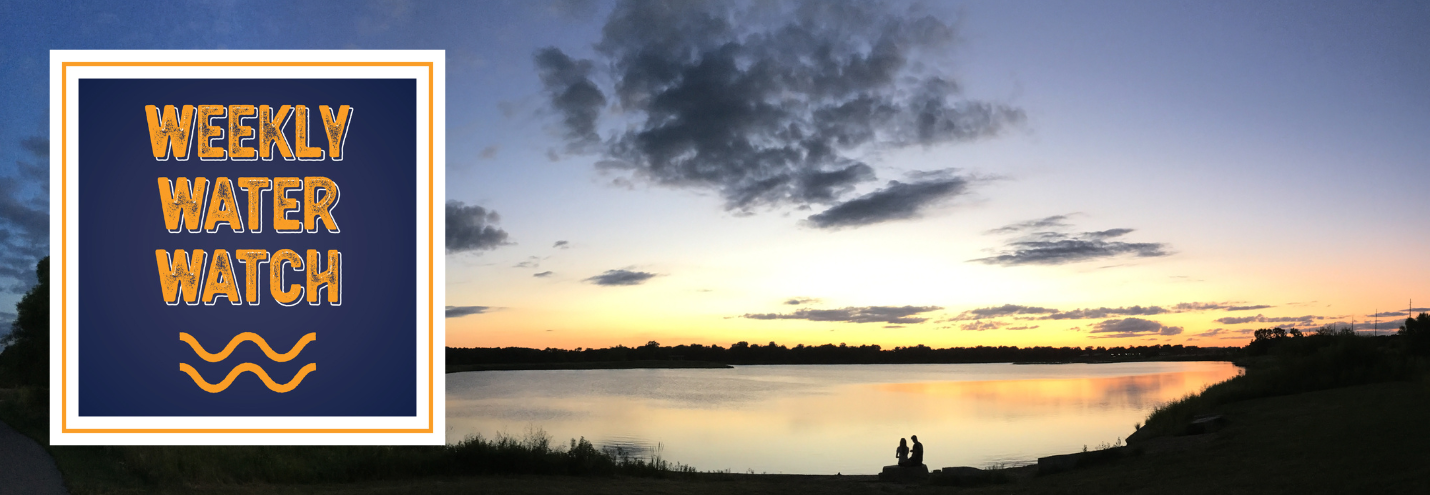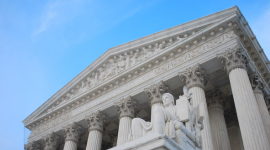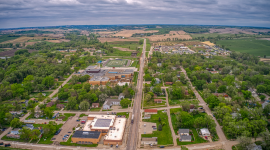|  | | 13 Beaches with an E. coli Advisory:
Backbone Beach (Dundee, Delaware County, IA)*
Beed’s Lake Beach (Hampton, Franklin County, IA)*
Big Creek Beach (Polk City, Polk County, IA)*
Clear Lake Beach (Clear Lake, Cerro Gordo County, IA)*
Lake Ahquabi Beach (Indianola, Warren County, IA)*
Lake Darling Beach (Brighton, Washington County, IA)*
Lake of Three Fires Beach (Bedford, Taylor County, IA)*
Lower Pine Lake Beach (Eldora, Hardin County, IA)*
Nine Eagles Beach (Davis City, Decatur County, IA)*
North Overlook Beach (Lake Red Rock, Pella, Marion County, IA)**
Pleasant Creek Lake Beach (Palo, Linn County, IA)*
Sugar Bottom Campground Beach (Coralville Lake, Coralville, Johnson County, IA)**
Union Grove Beach (Gladbrook, Tama County, IA)* 1 Beach with a Microcystin Advisory:
Lake Darling Beach (Brighton, Washington County, IA)* 4 City and County Beaches exceed the state’s advisory threshold for E. coli.*
View the map on our website to see where. Note: Lake Keomah has been completely drained for lake renovations activities and the beach is closed for the remainder of the season. Oak Grove Beach at Saylorville Lake remains closed due to flooding. *Data from the Iowa DNR State Park Beach Monitoring Program
**Data from the U.S. Army Corps of Engineers, Rock Island District |
| Measuring Tile Drainage in Iowa |
| Although recent rains have brought Iowa out of drought, they also led to flooding and significant increases in nitrate loads to surface waters – the same nitrate leading to a dead zone in the Gulf of Mexico the size of New Jersey. Tile drainage, the underground piping in cropland, has contributed to the flow of nitrate from fertilizer and manure. USDA’s five-year national census of agriculture, released earlier this year, shows that Iowa still has the largest number of acres drained by tile lines. It also showed a surprising 7.7% reduction in tile-drained acres in Iowa and several other Midwestern states. This runs against anecdotal evidence of increased tile installation across the state, especially in eastern Iowa (I’ve seen plenty of the large black coils in fields over the last few years). There is no evidence (reported, anecdotal, or otherwise) of old tile drainage being removed without being replaced. Even with the reported reduction, Iowa has by far the most tile-drained acres in the country and almost half of Iowa cropland is tile-drained. There are a few potential explanations for the decrease. First, the census showed a 3.3% reduction in cropland in Iowa compared to five years earlier; it makes sense for fewer acres to have less drainage. Second, the census doesn’t get responses from everyone, creating some variability in the survey results – and the response rate dropped by 10% compared to the previous census. And at the county scale, there is even more questionable variability: did Buena Vista County really reduce tile drainage by 72,000 acres? Probably not, and the same is true in several other counties. Cedar County, on the other hand, might have had the 8th highest growth in newly tiled acres nationwide. |
| |
|
| |  | |  | The past, present, and future of the Chevron Doctrine In 1981, the Environmental Protection Agency (EPA) implemented the “Bubble” Policy, which exercised its agency powers to interpret regulations from the Clean Air Act. Three years later, the landmark case Chevron v. Natural Resources Defense Council challenged the "Bubble" Policy. The Supreme Court decision to this case upheld the policy, determining that a federal agency can use its discretion and expertise to interpret an ambiguous law. For four decades, "Chevron Deference" has enabled federal agencies to create policies and implement the law when Congress is not explicit to meet the needs of modern times. On June 28, 2024, the Supreme Court in a 6-3 ruling overturned the district court’s decision and officially struck down Chevron Deference in the case of Loper Bright Enterprises v. Raimondo. This case was elevated to the Supreme Court after Loper Bright Enterprises filed a lawsuit with the Department of Commerce for a regulation known as the Magnuson-Stevens Act, which required government-appointed inspectors to be on board fishing vessels to ensure fishing companies are in compliance with federal regulations and not overfishing. As of 2013, inspection costs were to be incurred by fishing businesses themselves, rather than the National Marine Fisheries Service, to which a D.C. Circuit and Court of Appeals cited the Chevron Doctrine as grounds for the interpreted regulation. This new ruling transfers an extraordinary amount of power from the executive branch, and agencies like the EPA, to the judicial branch of government. Judges, who likely have little to no subject-matter expertise and are not accountable to the public, are now responsible to determine how ambiguous policies will be implemented in often highly technical, complicated cases which would otherwise be left to the authorization of an expert. Read more about the 2024 Chevron Doctrine Ruling here. |
|
|
 | DNR falls behind on issuing 2024-26 Triennial Review Every three years, the Department of Natural Resources is required to issue a Triennial Review of the state’s water quality standards. The process and resulting report identify priorities and establish a work plan to update the state’s water quality standards. It is required under the Clean Water Act. The last report was issued in 2021 for the 2021-23 cycle. The 2024-26 report should be completed and issued this year, but due to the Governor’s Executive Order 10 and delays within DNR, the report will not be issued until 2025. In past Triennial Review cycles, IEC has called on DNR to include numeric nutrient criteria (NNC) in its review of water quality standards. Nutrient pollution (excess nitrogen and phosphorus) from fertilizer is the state’s most severe water quality problem. The federal Clean Water Act requires states to set water quality standards limiting the amount of these types of pollutants and offers two approaches: narrative and numeric. DNR currently uses narrative criteria for fertilizer pollution control, which is inherently subjective and does not allow for measurement. Numeric criteria would be a data-based method would make it possible to clearly measure how each waterbody compares to the standard and identify which waterbodies need protection and remediation from fertilizer pollution. IEC and the Environmental Law & Policy Center have even petitioned the state to adopt NNC. We expect the Triennial Review to be issued in early 2025 and once again call on the department to finally include NNC. To learn more about NNC, check out IEC’s infographic and timeline. | |
|
|
 | Land along Missouri River transferred to Winnebago Tribe This summer, the President Biden signed the Winnebago Land Transfer Act, authorizing roughly 1,600 acres of land along the Missouri River in Woodbury County to be transferred from the U.S. Army Corps of Engineers to the Winnebago Tribe. This legislation was initially introduced by Iowan Representative Randy Feenstra, cosponsored by the Nebraska and Iowa Congressional Delegations, as well as Representative Sharice Davids — a member of the Winnebago’s sister tribe, the Ho-Chunk Nation. The Act was passed by unanimous consent by the U.S. Congress in an unprecedented effort to restore the Winnebago Tribe's land. The Winnebago Tribe released the following statement by Chairwoman Victoria Kitcheyan as a result of the Winnebago Land Transfer Act being passed: “This is a truly historic moment for the Winnebago Tribe as lands that were taken from us over 50 years ago will soon be restored to the Tribe. Our ancestors, including the late Louis LaRose, fought tirelessly to secure and protect our homelands. We are honored to carry on their work and help send this bill to the President in their honor." The land, known as Winnebago Bend Wildlife Area, including the majority of the waterfowl refuge at Snyder Bend Wildlife Area, was illegally redesignated to the Army Corps for a proposed recreation project back in 1970 which never came to fruition. Now, ownership will be restored as part of the Winnebago Reservation. Signage will soon designate the Winnebago Bend and portions of Snyder Bend as no longer open for public use. More information about the Winnebago Tribe, including their long history fighting to redesignate the land and their statements on the Winnebago Land Transfer Act, is available on their website. |
|
|
| |  | | What's new in Iowa's water news: |
|
|
| Upcoming water events: • Floatzilla Paddle Event - Quad Cities, 8/16 - 8/17
• Iowa Prairie Conference - Milford, 8/16 - 8/18
• Drainage Water Recycling Field Day - Lake City, 9/4
• Iowa Water Conference - Coralville, 9/10 - 9/11
• IEC Sponsored Field Day: Practical Farmers of Iowa - Marion, 9/13
• Des Moines Water Works Tour - Des Moines, 9/23
• 2024 IEC Annual Conference - Des Moines, 9/24
• Industrial Farm Animal Production, The Environment, and Public Health Conference - Des Moines, 9/25 - 9/26
• 2024 ProH2O - Des Moines, 9/26 |
|
|
| |  | | | Iowa Environmental Council
505 Fifth Ave., Suite 850
Des Moines, Iowa 50309-2317
515-244-1194 | iecmail@iaenvironment.org |
|
|
|
|
|